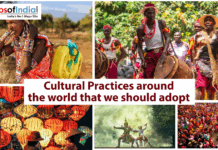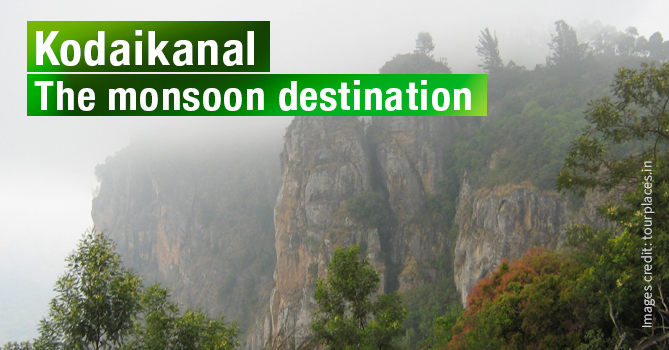Heat was not a hindrance. Dust was not a deterrent. The photography fee was not an obstacle either. Photographers of all sorts from India and other countries flocked to the pilgrim town – Pushkar during Oct-Nov 2014 for only one reason: to make beautiful frames of the rural world.
Pushkar draws in people across all ages and profiles for reasons more than one. Cattle owners with their animals arrived in the town to do business at the largest camel fair of India. The God-fearing and easy salvation seekers thronged the town to wash off their sins in one of the five principal lakes without which Hindu pilgrimage is probably incomplete. Fun seekers wanted a glimpse of dancing camels and horses. Culture vultures were keen on witnessing the tradition of decorating the animals and others wanted to applaud their teams or to participate in the games.
I was impressed with options for action and interactions during the Pushkar Fair. I packed my bag and camera and hit the road on October 30 was in the town at a time when it was getting ready for the visitors.
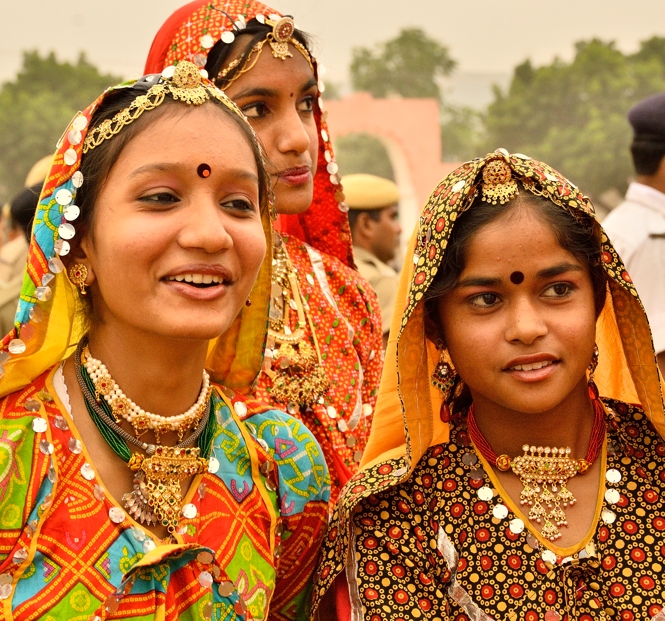
When I first stepped inside a printed tent, a temporary home of horse owners from Punjab, one of them asked his partner: “Why do so many visitors take pictures of animals every year? What do they do with these photographs?” The partner murmured something, which I did not understand. But I did understand that the participants at Pushkar fair may not be comfortable with photographers around them.
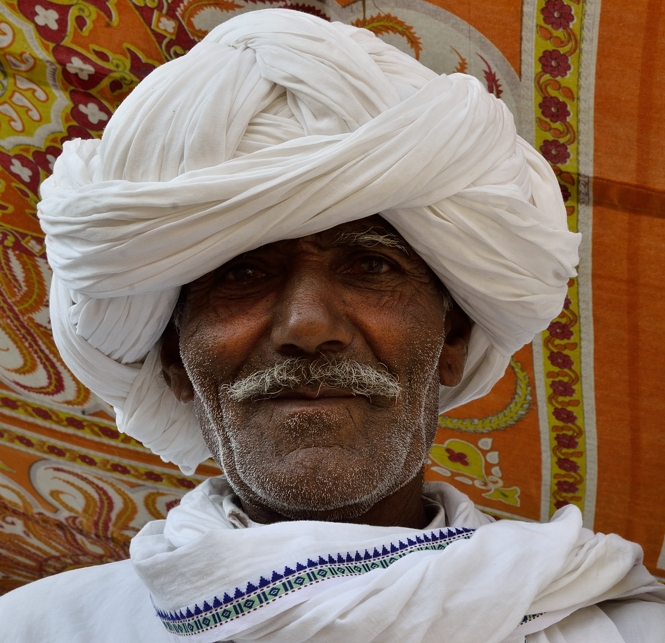
As I walked across the venue, I came in contact with many miffed participants and later discovered that my camera was the source of annoyance because I took their photos without returning them any favour, especially in monetary terms.
After being demanded money for clicking pictures of the locals, I finally got lucky on 3 November,. A few locals allowed me to take their pictures without any fee and fuss. This generous tribe was happy to see their pictures on my camera’s live view.
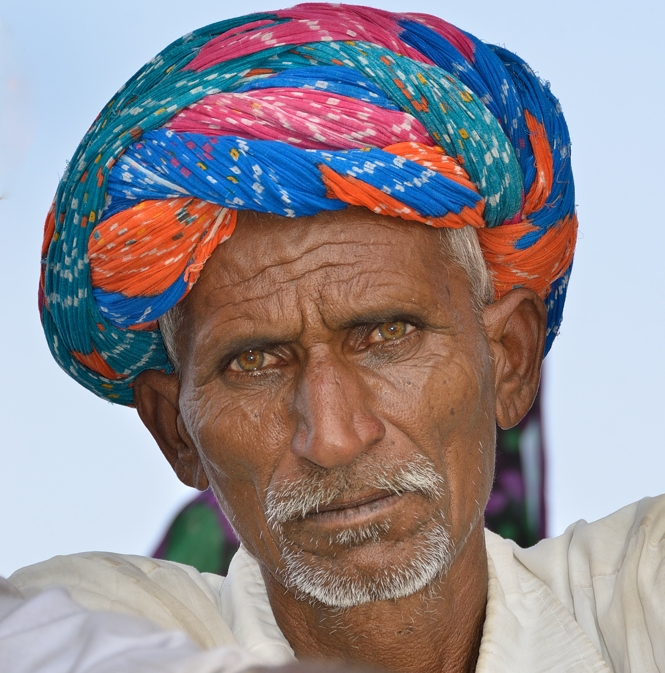
A question that bugged me, and probably other photographers too, was why some locals caught the fancy of the photographers while others did not?
I just deliberately ignored people and searched for interesting frames in well-bred and aesthetically decorated camels and horses, game competitions, and the venue for Deepdan (lamp floating).
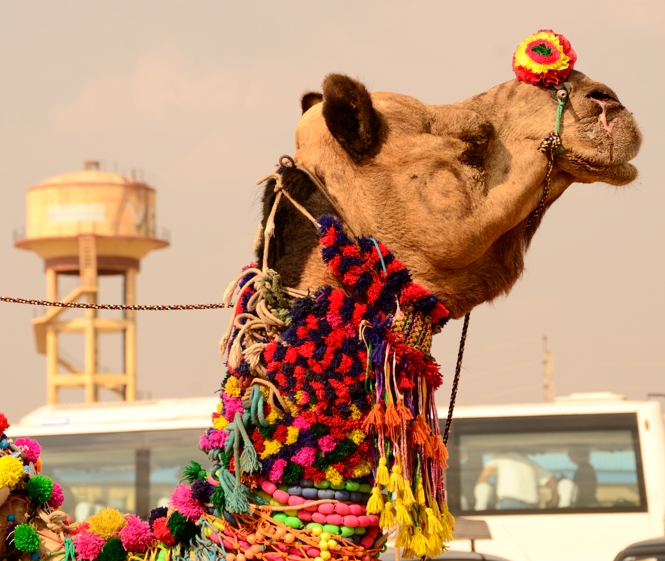
On November 1, gorbandh (camel decoration) and camel dance competitions opened ample opportunities to capture the colors of the spectacle. When the entry to the show is free, you cannot expect order. It requires taking your position well in advance for the best view. The small competition arena was soon surrounded by several onlookers. The late comers sat on hired camels to photograph and watch the camels that danced to the drum beats. Their dancing steps were simple: jumping, standing on hind legs, walking on knees, marching, and climbing on a traditional cot or a wooden table. The camels that were decorated for the occasion just walked the muddy flat ‘ramp.’ The animals competed for nominal monetary prizes.
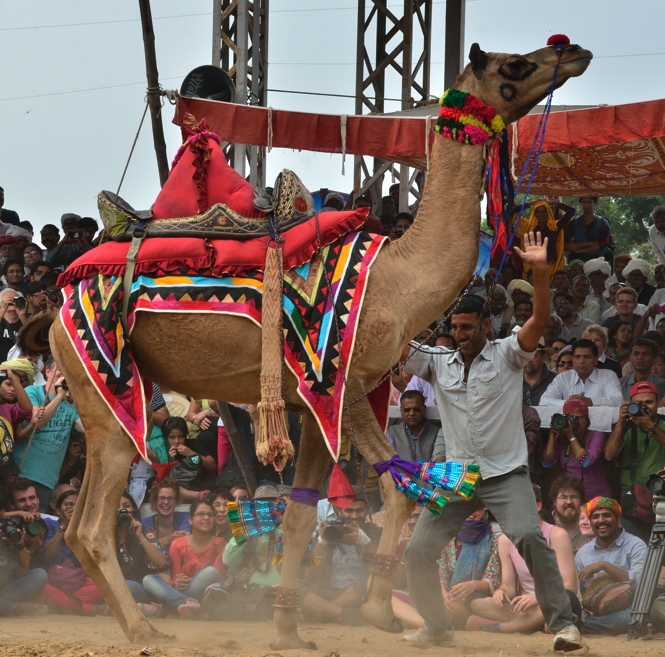
When a camel walked on its knees, the audience cheered it in the loudest possible pitch. With every inch it walked the pitch rose. But I did not find any joy on the faces of the camels and the horses that competed next day.
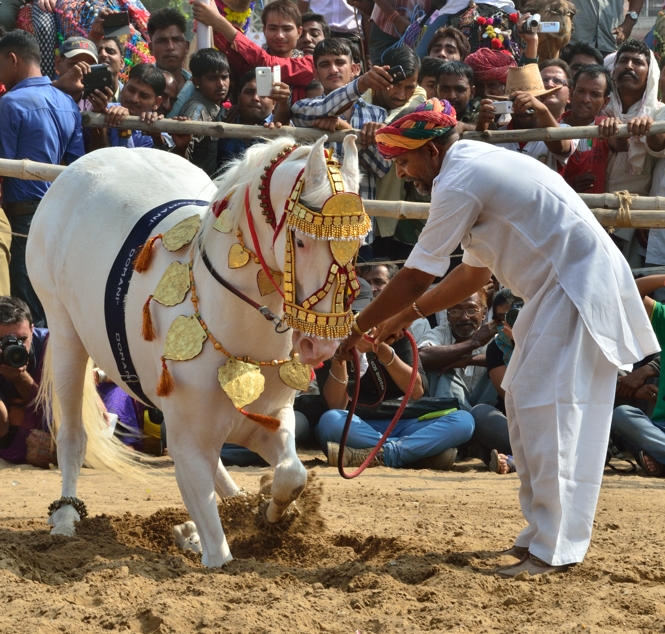
I remember, when I was pursuing degree in tourism, we were asked to solve a major problem that Indian tourism industry faced: lack or complete absence of evening entertainment. Today’s sedentary mankind anticipates some useful activity at destinations besides traditional trips to monuments, museums, and bazaars. To meet this demand, traditional game competitions for locals and visitors were also organized.
On October 31, foreign tourists showed their football skills and won the match. Next day locals equaled by winning the satolia match. The foreign tourists were also thrilled to learn a few tricks of kabaddi on the following day.
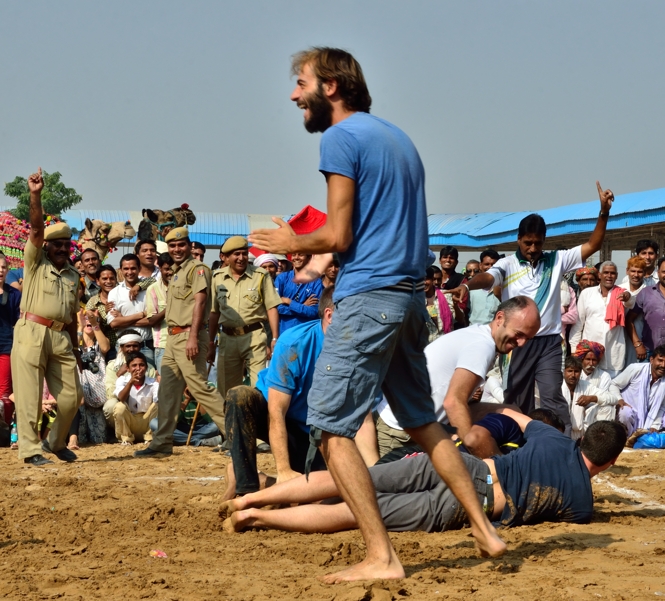
Mandana (folk art) competition was exclusively for locals. The girls and women painted mud canvas created on the stadium wall. It is difficult to paint on this canvas because there was little possibility to move the canvas in the direction of artist’s choice. They painted standing most of the time. When they reached to the bottom of the canvas, they squatted to complete the drawings. The participants mainly used just two locally available colors: white chalk (khadiya) and red ochre (geru). A few of them enhanced simple drawings with light blue color. The motifs were divine, faunal, floral, and geometrical. The art of flat drawings has been transferred to women folk for generations.
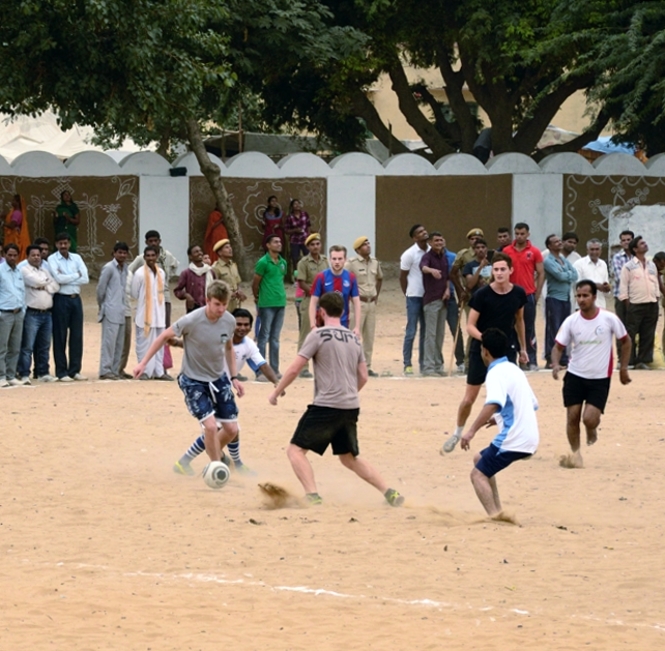
The dawn of the 3rd November was filled with saffron hues and smells of incense. Priest community and believers gathered in the town for the spiritual walk, teertha (pilgrimage), and other rituals.
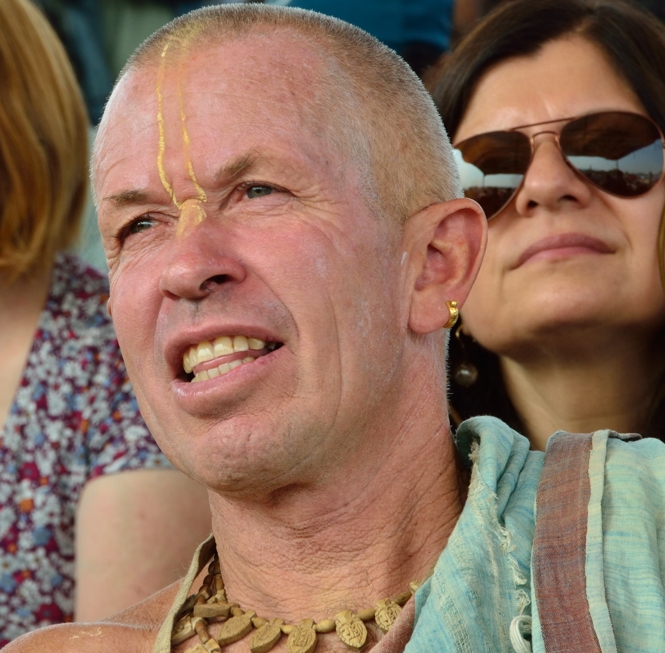
A spiritual walk, starting from the holy lake, consumed the morning. The procession of religious symbols and community ended at the stadium behind the fairground.
The word teertha is derived from Sanskrit word ‘tri’ that means getting rid of sins, the first easy step towards salvation. Since the town aids in washing the sins, it is thus called teertha. A dip on the auspicious day ensures a ticket to the heaven. Is it so easy?
Floating of lamps in the evening at 52 ghats (flights of steps) of the lake was a sight worth watching. It was no less than the Diwali night with fewer firecrackers. The short flames of tiny lamps looked into the water and coyly smiled at their glow. That smile generated more smiles. And in the true religious spirit of helping mankind selflessly, free food satiated many visitors.
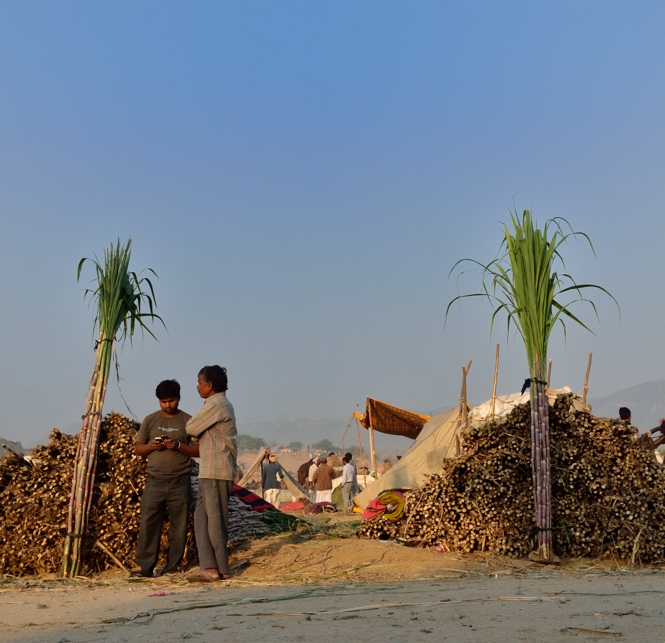
Do not worry if you have missed one of the world’s largest camel fairs served on a dun landscape, because it is an annual event.
Read More :



